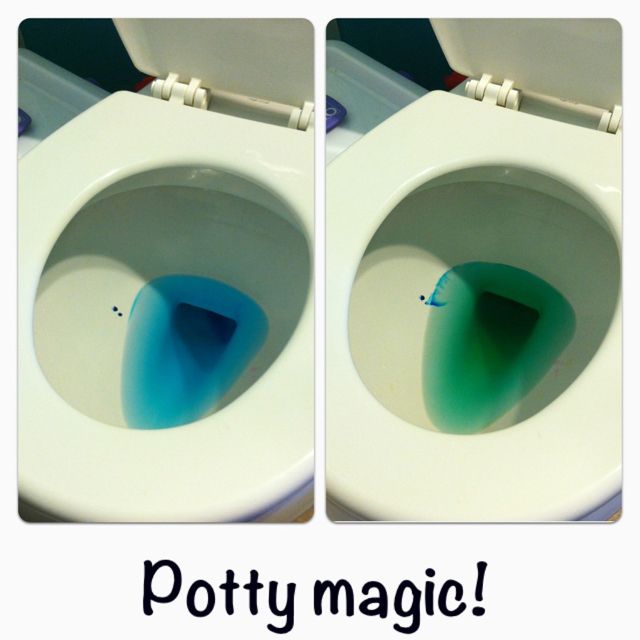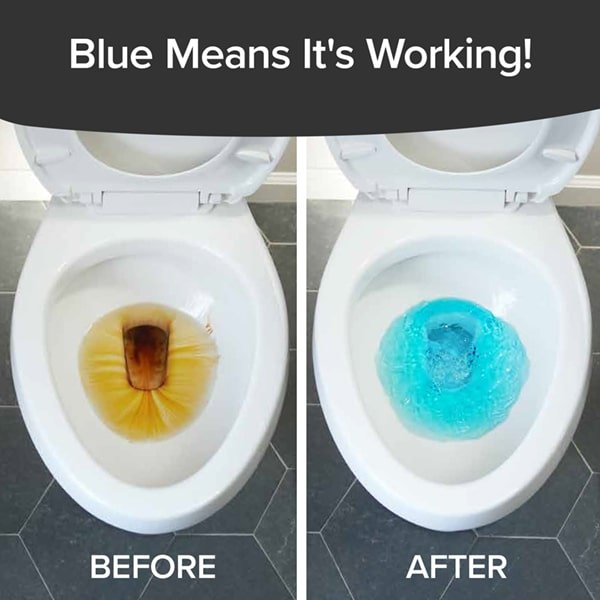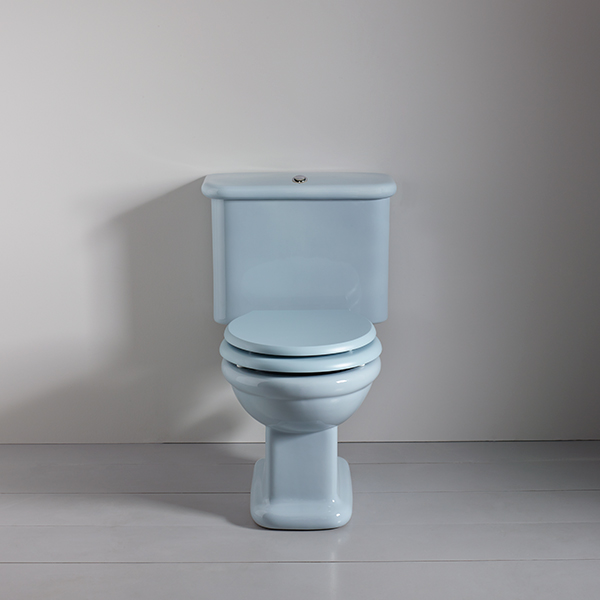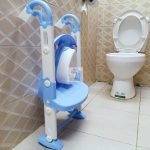Introduction to the Blue Toilet Water Mystery
The phenomenon of blue toilet water can be both puzzling and intriguing for homeowners. When your toilet water unexpectedly turns blue, it often raises questions about its cause, potential solutions, and how to maintain your plumbing effectively. Understanding the reasons behind this occurrence can help you tackle the issue effectively and ensure your bathroom remains in optimal condition.

Causes of Blue Toilet Water
Blue toilet water can typically be attributed to two primary causes: additives and chemical reactions.
Additives: Toilet Bowl Cleaners and Deodorizers
Many commercial toilet bowl cleaners and deodorizers contain blue dye as part of their formula. These products are designed to sanitize and freshen your toilet bowl with each flush, leaving behind a blue tinted water as a visual indicator of cleanliness. While effective in keeping the toilet bowl clean, prolonged use of these additives can sometimes lead to discoloration of the water.
Chemical Reactions: Interaction with Minerals
In certain plumbing systems, particularly those with copper pipes or components, a chemical reaction can occur between the water and the metal. This reaction can result in the water turning blue or greenish-blue due to the presence of copper ions. Water with a low pH level can exacerbate this reaction, intensifying the coloration of the toilet water.

Solutions to the Blue Toilet Water Problem
Resolving the issue of blue toilet water involves addressing its root causes and taking appropriate corrective measures.
Adjusting Cleaning Products
If blue toilet water is caused by additives in your cleaning products, consider switching to alternative cleaners that do not contain dyes. Opt for products that focus on disinfection without leaving behind colored residues. Alternatively, reduce the frequency of use of blue-dyed cleaners to minimize water discoloration.
Checking Plumbing System
To determine if the blue water is due to a chemical reaction with copper in your plumbing, inspect your pipes and fittings for signs of corrosion or copper deposits. Consider installing a water filtration system or using pH-balancing additives to stabilize the water chemistry and prevent further discoloration.
Maintenance Tips for Preventing Blue Toilet Water
Maintaining your toilet and plumbing system can help prevent unexpected occurrences of blue toilet water and ensure overall system longevity.
Regular Cleaning and Inspection
Regularly clean your toilet bowl using mild cleaners that do not contain dyes or harsh chemicals. Periodically inspect the toilet tank and plumbing for any signs of corrosion or leaks that could contribute to water discoloration.
Water Quality Monitoring
Monitor the quality of your water supply by periodically testing for pH levels and the presence of minerals like copper. This proactive approach allows you to detect potential issues early and take preventive measures to maintain water clarity.
Environmental Impact Considerations
Beyond the aesthetic and maintenance concerns, the presence of blue toilet water can also raise environmental considerations.
Chemical Disposal and Impact
The chemicals present in some toilet bowl cleaners and deodorizers, including those that cause the water to turn blue, can have adverse effects on the environment if not disposed of properly. When these chemicals enter water systems through flushing or improper disposal, they can contribute to water pollution and potentially harm aquatic life.
Eco-Friendly Alternatives
To minimize environmental impact, consider switching to eco-friendly toilet cleaning products that are biodegradable and free from harmful chemicals. Look for certifications such as EPA Safer Choice or Green Seal to ensure the products meet environmental standards while effectively maintaining toilet hygiene.
Health and Safety Considerations
While most blue toilet water is harmless and primarily a cosmetic issue, there are some health and safety considerations to keep in mind.
Skin Irritation and Allergies
Some individuals may experience skin irritation or allergies due to prolonged exposure to chemicals or dyes present in toilet bowl cleaners. If you or your family members have sensitive skin, opting for hypoallergenic or dye-free cleaning products can help mitigate potential health risks.

Water Quality Concerns
If the cause of blue toilet water is related to chemical reactions with plumbing materials like copper, it’s essential to monitor water quality regularly. High levels of copper in drinking water can pose health risks, particularly for vulnerable populations such as children and individuals with compromised immune systems. Testing your water periodically and installing appropriate filtration systems can help ensure water safety.
Advanced Maintenance Techniques
For persistent or complex cases of blue toilet water, advanced maintenance techniques may be necessary.
Professional Plumbing Inspection
If you suspect the blue water is due to underlying plumbing issues such as corroded pipes or fittings, consult a professional plumber for a comprehensive inspection. They can identify the source of the problem and recommend appropriate repairs or replacements to prevent further water discoloration.
Upgrading Plumbing Systems
Consider upgrading your plumbing system to materials that are less prone to chemical reactions, such as PVC or PEX pipes, if copper corrosion continues to be an issue. This investment can provide long-term benefits in terms of water quality and system durability.
Practical Tips for Everyday Maintenance
Maintaining clear and fresh toilet water doesn’t have to be complicated. Here are some practical tips for everyday maintenance:
1. Regular Cleaning Schedule
Develop a regular cleaning schedule for your toilet bowl using mild, non-dyed cleaners. Clean both the bowl and the tank to prevent buildup that could contribute to water discoloration.
2. Use Toilet Tank Tablets Wisely
If you use toilet tank tablets for cleaning and deodorizing, choose products that are specifically designed not to discolor water. Some tablets are formulated to dissolve without leaving behind dyes or residues.
3. Monitor Water Color Changes
Be vigilant about changes in toilet water color. If you notice sudden or persistent blue discoloration, investigate the cause promptly to prevent potential plumbing issues or health risks.
4. Water Quality Testing
Consider testing your home’s water quality periodically, especially if you suspect chemical reactions with plumbing materials. This can help identify any underlying issues and guide you in selecting appropriate water treatment solutions.
Addressing Specific Concerns
1. Community Water Systems
If you’re on a community water system and notice widespread blue water issues, communicate with your local water authority. They can investigate potential causes such as changes in water treatment chemicals or distribution system issues.
2. Old Plumbing Systems
For older homes with aging plumbing systems, consider consulting a plumber for an assessment. They can recommend upgrades or repairs to improve water quality and reduce the risk of chemical reactions that cause blue water.
Educating Others
Share your knowledge about the causes and solutions to blue toilet water with friends, family, and neighbors. By raising awareness, you can help others prevent and address similar issues in their homes, promoting better community health and environmental responsibility.
Conclusion: Managing the Blue Toilet Water Mystery
The presence of blue toilet water can be a manageable issue with the right understanding and approach. By identifying the causes, implementing appropriate solutions, and adopting regular maintenance practices, you can effectively manage and prevent the phenomenon. Remember, maintaining a clean and well-functioning toilet not only enhances bathroom aesthetics but also promotes overall hygiene and comfort in your home.
Managing blue toilet water involves a blend of awareness, proactive maintenance, and responsible product choices. By understanding the causes—whether from additives in cleaning products or chemical reactions with plumbing materials—you can take targeted actions to maintain clear and safe toilet water. Regular cleaning, water quality monitoring, and professional assessments when needed are key to ensuring your bathroom remains a clean and comfortable space. Remember, a little prevention goes a long way in preserving both your plumbing and peace of mind.


